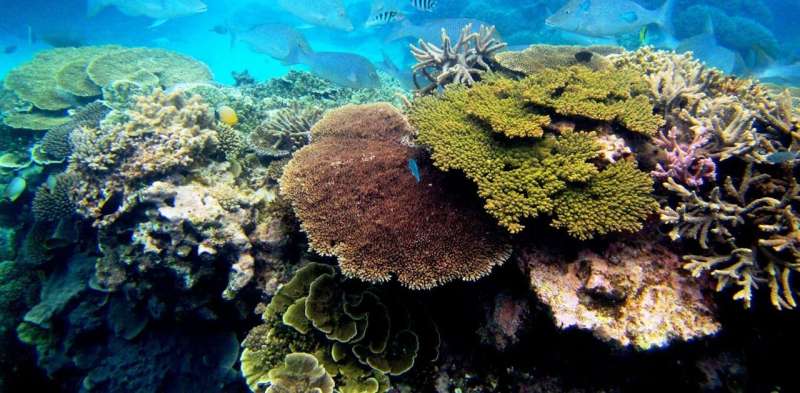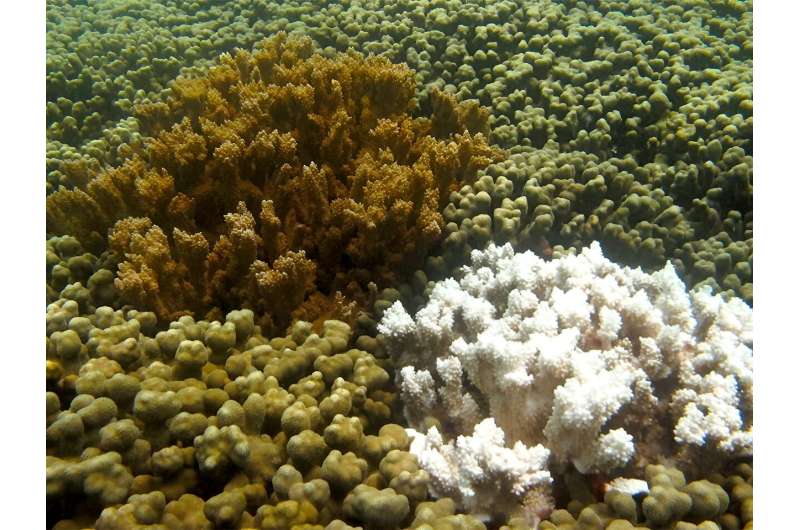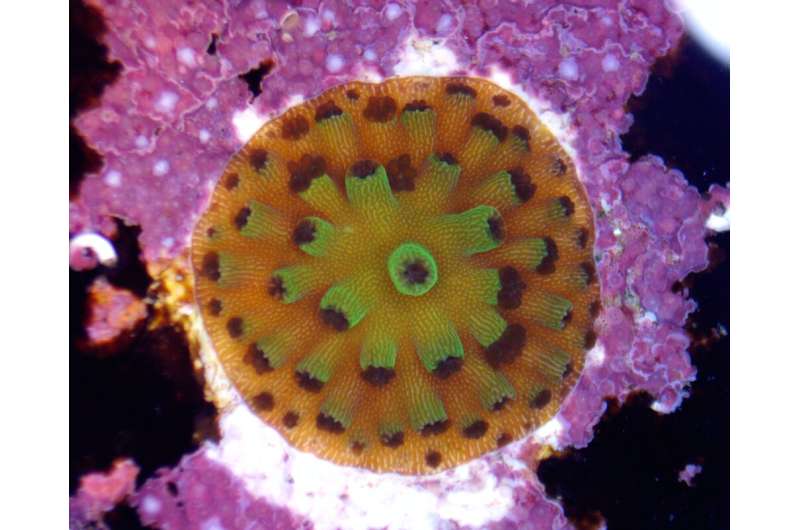As climate change and pollution imperil coral reefs, scientists are deep-freezing corals to repopulate future oceans

Coral reefs are some of the on Earth, and among the most valuable. They nurture , and add to the global economy through their influences on fisheries, new pharmaceuticals, tourism and recreation.
Today, the world's coral reefs are degrading at due to pollution, overfishing and and on land. Climate change driven by human activities is , producing a reef crisis that could cause most corals to go extinct .
I am a at the Smithsonian's . For 17 years, I have worked with colleagues to create a global science program called the that aims to help save coral reefs by using the .
This novel approach involves storing and cooling coral sperm and larvae, or , at very low temperatures and holding them in .
These repositories are an important hedge against extinction for corals. Managed effectively, they can help offset threats to the Earth's reefs on a global scale. These frozen assets can be used today, 10 years or even 100 years from now to help reseed the oceans and restore living reefs.
Safely frozen alive
Cryopreservation is a process for freezing biological material while maintaining its viability. It involves introducing sugarlike substances, called cryoprotectants, into cells to help prevent lethal ice formation during the freezing phase. If done properly, the cells remain frozen and alive in liquid nitrogen, unchanged, for many years.
Many organisms survive through cold winters in nature by becoming naturally cryopreserved as temperatures in their habitats drop below freezing, Two examples that are common across North America are —a²Ô»å .
Today, coral cryopreservation techniques rely largely on . Since 2007, I have trained many colleagues in coral cryopreservation and worked with them to successfully preserve coral sperm. Today we have sperm from over 50 species of corals .
We have used this cryopreserved sperm to produce new coral across the Caribbean via a selective breeding process called . The goal was to use cryopreserved sperm and interbreed corals that would not necessarily have encountered each other—a type of long-distance matchmaking.
Genetic diversity is maintained by combining as many different parents as possible to produce new sexually produced offspring. Since corals are cemented to the seabed, when population numbers in their area decline, new individuals can be introduced via cryopreservation. The hope is that these new genetic combinations might have an adaptation that will help coral survive changes in future warming oceans.
These assisted gene flow studies produced 600 new genetic-assorted individuals of the threatened elkhorn coral Acropora palmata. As of early 2024, there are only about 150 elkhorn individuals left in the wild in the Florida population. If given the chance, these selectively bred corals held in captivity could significantly increase the wild elkhorn gene pool.

Preserving sperm cells and larvae is an important hedge against the loss of biodiversity and species extinctions. But we can only collect this material during when corals release egg and sperm into the water.
These episodes occur over just a few days a year—a small time window that poses logistical challenges for researchers and conservationists, and limits the speed at which we can successfully cryo-bank coral species.
To complicate matters further, warming oceans and increasingly frequent marine heat waves can biologically stress corals. This can make their reproductive material too weak to withstand the rigors of being cryopreserved and thawed.
Scaling up the rescue
To collect coral material faster, we are developing a cryopreservation process for whole coral fragments, using a method called . This technique is still developing. However, if fully successful, it will preserve whole coral fragments without causing ice to form in their tissues, thus producing viable fragments after they've thawed that thrive and can be placed back out on the reef.
To do this, we dehydrate the fragment by exposing it to a viscous cryoprotectant cocktail. Then we place it into a small aluminum cylinder and immerse the cylinder in liquid nitrogen, which has a temperature of .

This process freezes the cylinder's contents so fast that the cryoprotectant forms a clear glass instead of allowing ice crystals to develop. When we want to thaw the fragments, we place them into a warm water bath for a few minutes, then rehydrate them in seawater.
Using this method, we can collect and cryopreserve coral fragments year-round, since we don't have to wait and watch for fleeting spawning events. This approach greatly accelerates our conservation efforts.
Protecting as many species as possible will require expanding and sharing our science to create robust cryopreserved-and-thawed coral material through multiple methods. My colleagues and I want the technology to be easy, fast and cheap so any professional can replicate our process and help us preserve corals across the globe.
We have created a video-based coral cryo-training program that includes directions for , and have collaborated with engineers to develop new methods that now allow coral larvae to be frozen by the hundreds on . These new tools will make it possible for labs around the world to significantly accelerate coral collection around the globe within the next five years.
Safeguarding the future
Recent climate models estimate that if greenhouse gas emissions continue unabated, 95% or more of the world's corals . This leaves precious little time to conserve the biodiversity and genetic diversity of reefs.
One approach, which is already under way, is bringing all coral species into human care. The Smithsonian is part of the , an international collaboration to conserve corals by collecting live colonies, skeletons and genetic samples and using the best scientific practices to help rebuild reefs.
To date, over 200 coral species, out of some 1,000 known hard coral species, and thousands of colonies are under human care in institutions around the world, including organizations connected with the U.S. and European arms of the . Although these are clones of colonies from the wild, these individuals could be put into coral breeding systems that could be used for later cryopreservation of their genetically-assorted larvae. Alternatively, their larvae could be used for reef restoration projects.
Until climate change is slowed and reversed, reefs will continue to degrade. Ensuring a better future for coral reefs will require building up coral biorepositories, establishing on-land nurseries to hold coral colonies and develop new larval settlers, and training new cryo-professionals.
For decades, zoos have used to protect animals species that have fallen to critically low levels. Similarly, I believe our novel solutions can create hope and help save coral reefs to reseed our oceans today and long into the future.
Provided by The Conversation
This article is republished from under a Creative Commons license. Read the .![]()



















